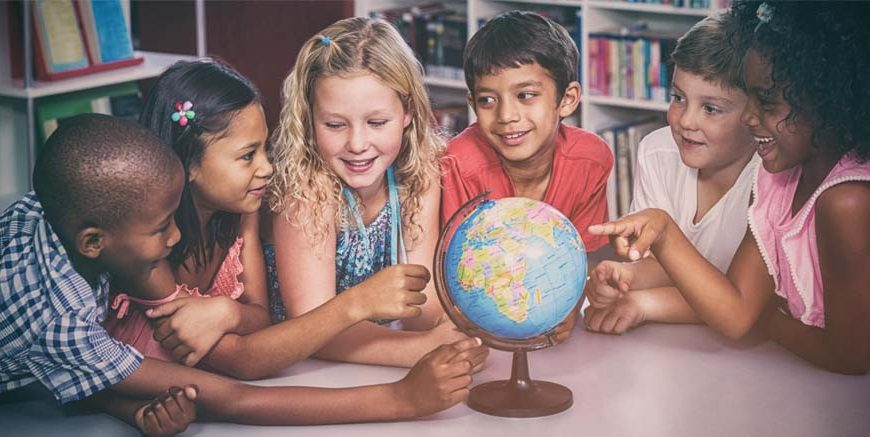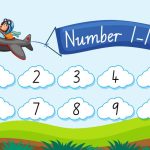Language is the key to effective communication and effective communication plays a pivotal role in all aspects of our lives. Learning, speaking and effectively communicating in multiple languages is well documented and has become even more crucial in the modern world. In a globalised world where the intermingling of people and cultures is encouraged, knowing more than one language becomes vital. While terms like ‘bilingual children’ and ‘trilingual children’ are not new, they have become more relevant in recent years. Most curriculums in schools focus on learning more than one language, with almost all schools teaching English as it is considered to be a universal language.
While we are aware that speaking in more than one language is important, we haven’t quite pondered upon the capacity of children to grasp more than one language at such a young age. This is precisely what our article will focus on. One of the pillars of learning multiple languages is willingness. Only if one has the willingness to learn more than one language will that child gain language fluency. Before we delve into the need for children to learn multiple languages and some effective strategies to do so, let’s have a look at concepts like ‘bilingual children’ and trilingual children’.
Bilingual Children
As the term implies, it means the ability of children to speak two languages. Surprisingly, it is a proven fact that as children begin their journey of language acquisition, they tend to be capable of learning more than one language at a time. By the age of four or five, children can learn two languages. This is mainly when the child belongs to a family where the parents have different mother tongues. Another instance of where this is common is when a family emigrates. A more common form of this is when a child learns their mother tongue at home and another language in school which is usually the medium of instruction in that school. Now that you have a brief idea about bilingual children, let us move on to trilingual children.
Trilingual Children
Trilingual children come under the category of those children who speak three different languages, bordering or coming closer to multilingual children who usually speak more than three languages. While it is scientifically proven that a child can learn two languages and become fluent in both, it’s not the same for trilingual and multilingual children. To put it simply, with each new language that a child learns after already knowing two, he or she not only has a smaller exposure to the third language but also develops a limited vocabulary in that language. As one adds on more and more in terms of learning a new language, their capability to effectively speak in that language reduces, thus, affecting language fluency.
So, to come to the crux of our article and the main question which must be looming largely in your mind about the capability of a child to learn languages simultaneously. In simple terms, your child can learn up to four languages simultaneously while maintaining a decent enough proficiency in each to communicate effectively.
When Should A Child Be Exposed To Multiple Languages?
A child should be exposed to multiple languages as early as possible. Early exposure to different languages has been closely linked to effective communication among multilingual children. Learning different languages at an early age while the process of cognitive development has just begun, allows kids to have a strong foundation which they can build upon later on their journey of language acquisition. Children who are raised in families that speak more than one language are more likely to pick up on those languages. It’s known as an unknown fact that kids learn from their immediate surroundings. Kids learning by listening and listening to the phonetics of the languages spoken at home creates a lasting impression on the child’s mind. Not only will such a child find it easier to pick up the languages later on, but he or she will also be able to pronounce words better in those languages than other children who are not exposed to multiple languages at home.
Why Should Children Learn Multiple Languages?
- Cognitive benefits
- Improved communication skills
- Cultural awareness
- Better career opportunities
Learning multiple languages from a young age opens up various pathways to the mind and has often been linked with quicker and better development of cognition. It helps improve problem-solving skills, critical thinking, flexibility of thoughts and even creativity. To put it simply, kids who learn more than two or three languages have greater mental agility than those who know only one language.
One who can speak in multiple languages is also better at understanding the process of communication. Since one would have the experience of speaking more than one language, one would be able to communicate with people from different regions without any difficulty.
Exposing children to different languages indirectly translates to exposing them to different traditions, cultures and perspectives. This promotes or fosters an intermingling of cultures in a classroom and allows for kids to be more empathetic towards one another. Encouraging cultural diversity is a priority and multilingualism can help a great deal in furthering it.
Knowing more than one language has the added benefit of opening up different windows of opportunity in different parts of the world. This may not be beneficial to you once your child is very young but it goes a long way in securing his or her future.
Effective Strategies For Fostering Multilingualism
- Create a multilingual learning environment
- Foster a sense of cultural diversity
- Develop a clear-cut routine
This can be done by exposing your child to books, audio and videos of cartoons or kid’s movies in different languages. The storytelling method is an age-old technique that can be incorporated to teach children different languages.
Encourage your kids to interact, speak and play with kids from different regions. This helps your child pick up new languages and also helps them become empathetic towards different cultures. Embrace the opportunity to become multilingual and celebrate individual differences.
Language like any other skill requires continuous practice. Ensure that your child has a designated time to learn and practise the language daily.
Here at EuroKids, we encourage a deep and rich multilingual environment to expose kids to new experiences and teach them different languages in a fun and interesting way. Through the use of indoor as well as outdoor activities, we mould the minds of your little ones to have a willingness to learn more. Apart from focusing on our curriculum which is a blend of academics and co-curricular activities, we focus on installing moral values and teaching your kids life-long lessons. If you want to learn more about what we do, visit our blog or head down to our nearest centre.
















